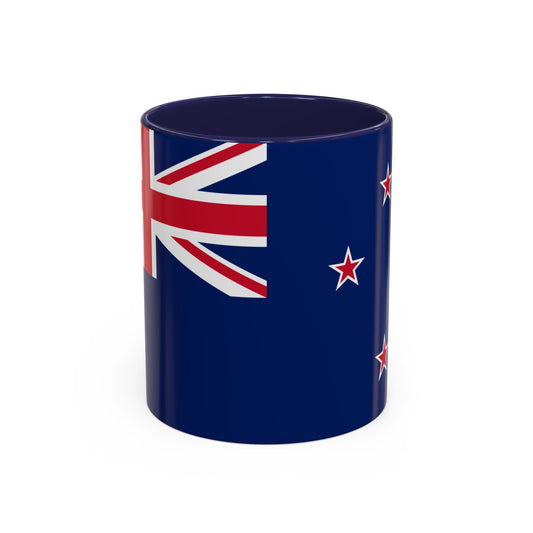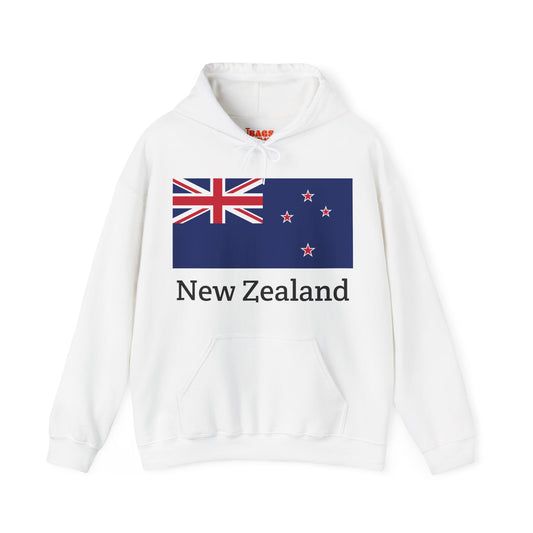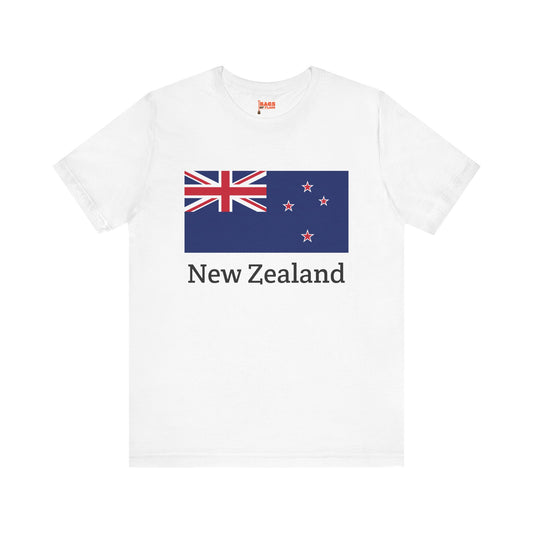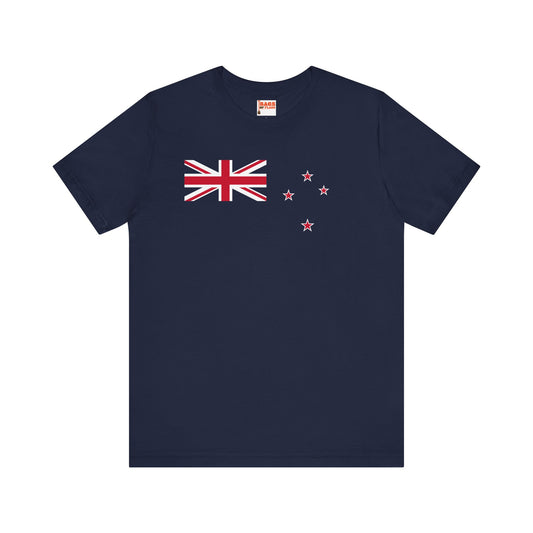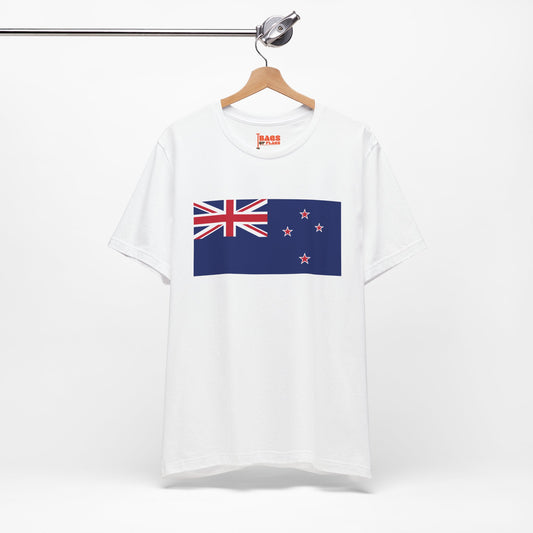-
New Zealand Inspired Sweatshirt
Regular price $34.15 USDRegular priceUnit price / per -
New Zealand Flag Sweatshirt
Regular price $34.15 USDRegular priceUnit price / per -
New Zealand Sweatshirt
Regular price $34.15 USDRegular priceUnit price / per -
New Zealand Leather Patch Hat
Regular price $18.85 USDRegular priceUnit price / per -
New Zealand Mug
Regular price $8.65 USDRegular priceUnit price / per -
New Zealand Inspired Hoodies
Regular price $34.40 USDRegular priceUnit price / per -
New Zealand Hoodies
Regular price $34.40 USDRegular priceUnit price / per -
New Zealand T-shirts
Regular price $22.79 USDRegular priceUnit price / per -
New Zealand Flag Hoodies
Regular price $34.40 USDRegular priceUnit price / per -
New Zealand Inspired T-shirt
Regular price $22.79 USDRegular priceUnit price / per -
New Zealand Flag on T-shirt
Regular price $22.79 USDRegular priceUnit price / per
Collection: New Zealand
The New Zealand flag symbolizes the country's identity and history. The flag has sparked debates and controversies over the years with its distinctive design and colors. We will explore the flag's controversies and current relevance, delving into its historical context, symbolism, and unique facts.
Overview of the New Zealand Flag

Sporting a rich blue backdrop, the New Zealand flag elegantly hosts the Union Jack in its top left corner, a homage to the country's historical connections with the United Kingdom. The flag proudly displays the Southern Cross constellation to the right, depicted through four red stars edged with white trimming. This celestial emblem marks New Zealand's location in the Southern Hemisphere and adds a distinctive feature that sets it apart on the global stage. The choice of colors and symbols interweaves New Zealand's colonial past with its geographical identity, crafting a flag that resonates with history and place. This flag, waving under the Pacific sun, encapsulates a blend of tradition and geographical significance, mirroring the nation's journey through the centuries.
Historical Context of the Flag
The path to adopting the current New Zealand flag began in the latter part of the 19th century, officially becoming the national symbol in 1902. Before this, various flags were used to represent New Zealand, including the United Tribes Flag and the British Blue Ensign, reflecting the country's evolving political status and relationship with the British Empire. The decision to adopt a new flag design stemmed from a desire to establish a distinctive emblem that could serve both on land and at sea, especially important as New Zealand sought to assert its identity on the international stage.
The flag's design has sparked discussion throughout the years, particularly regarding its reflection of New Zealand's national identity. While the flag has been embraced by many, its symbols have been critiqued for emphasizing colonial ties over the country's indigenous heritage and multicultural present. Despite ongoing debates and a significant push for change culminating in a 2016 referendum, the public ultimately voted to retain the original flag design. This decision underscored the complexity of national identity and the deep-rooted significance of historical symbols in New Zealand's collective memory. With its historical and symbolic layers, the flag continues to wave as a representation of New Zealand's past, its connection with the broader world, and the ongoing discourse about its national identity.
Symbolism of the Flag

The New Zealand flag carries deep symbolism that intertwines the nation's colonial heritage and geographical identity. At the forefront, the Union Jack is a powerful reminder of New Zealand's historical ties to the United Kingdom, echoing its colonial past and ongoing relationship with the Commonwealth. This is juxtaposed with the Southern Cross constellation, a prominent feature in the Southern Hemisphere's night sky, which symbolizes New Zealand's location and its navigation through history and into the future. The constellation, with its four red stars outlined in white, also represents the country's spirit of exploration and its place within a larger community of nations under the southern skies.
However, this symbolism has been a point of contention, with some arguing that it needs to fully encapsulate New Zealand's rich cultural diversity, particularly the indigenous Maori heritage. Critics suggest that including elements more reflective of Maori culture and the broader multicultural fabric of the country would provide a more encompassing representation of New Zealand's identity in the 21st century. This debate highlights the evolving nature of national symbols and the quest to balance historical legacies with contemporary values and inclusivity.
Current Relevance of the New Zealand Flag
Today, the New Zealand flag continues to hold a place of honor in the hearts of many Kiwis, prominently featured at events of national pride and solemn commemoration alike. It flies at full mast to celebrate achievements and holidays and at half-mast to honor those we have lost, serving as a unifying symbol for the nation. It represents New Zealand in international arenas, distinguishing its athletes and officials on the global stage.
Despite the debates and the referendum on its design, the flag remains an emblem of national identity, deeply woven into the country's social fabric. Schools, public buildings, and private residences hoist the flag, manifesting a sense of belonging and patriotism. Even as discussions about its symbolism and relevance continue, the flag's presence at rugby matches, the Olympic Games, and other international events underscores its enduring significance. It serves as a marker of history and heritage and a living emblem of the nation's unity and diversity, reflecting an ongoing narrative of what it means to be New Zealander in the contemporary world.
Additional Facts About the New Zealand Flag
When it comes to the protocols surrounding the New Zealand flag, there are particular traditions that are meticulously followed. Among these, the practice of flying the flag at half-mast stands out as a significant gesture of national mourning, symbolizing respect and remembrance for those who have passed away. This tradition underscores the deep emotional and cultural connection New Zealanders have with their flag, reflecting its importance as a symbol of national unity and collective memory.
Additionally, the process of folding the New Zealand flag is steeped in custom, with detailed steps to ensure it is done respectfully and correctly. This careful folding process is not merely about preservation but also about showing honor and respect to the nation's emblem, which embodies the country's values, history, and aspirations.
Interestingly, the flag's current design was selected through a competition that took place in the late 19th century, inviting both local and international participants. This competition highlights the democratic and inclusive approach New Zealand has historically taken towards symbols of national significance. While the design ultimately chosen has been a subject of debate, it reflects an effort to balance New Zealand's colonial heritage with its distinct geographic and cultural identity.
These facets of the New Zealand flag—from the meticulous protocols for its display to the democratic process behind its selection—reveal the depth of meaning and reverence attached to this national symbol, underscoring its ongoing relevance and significance in New Zealand society.










